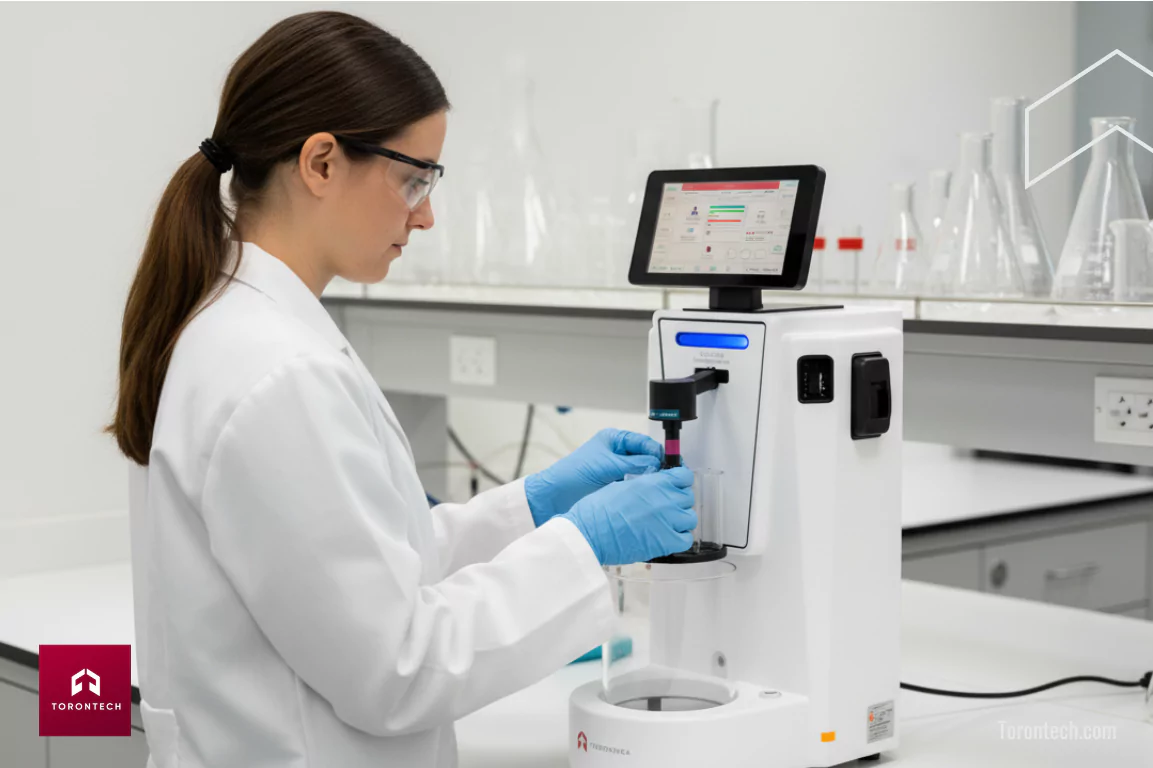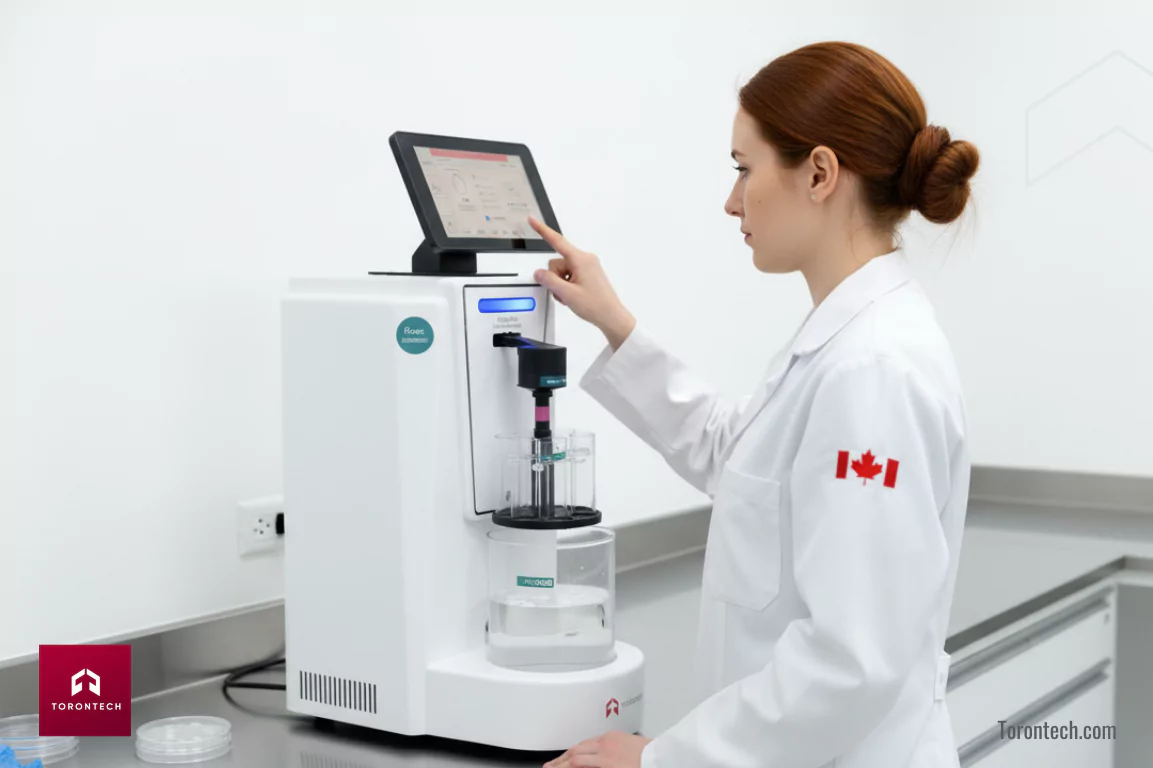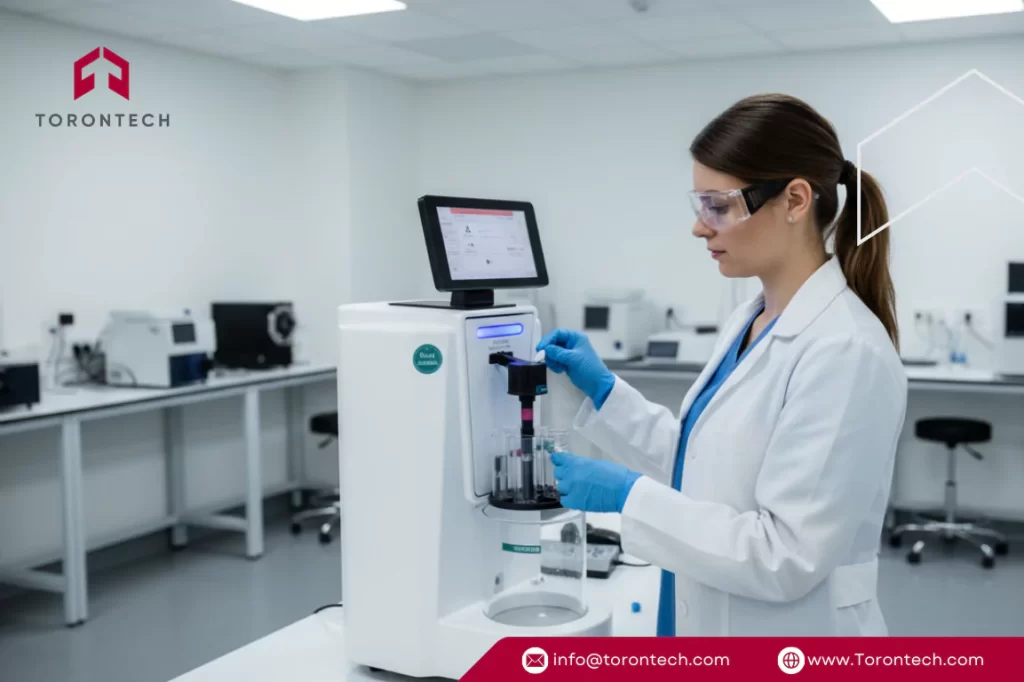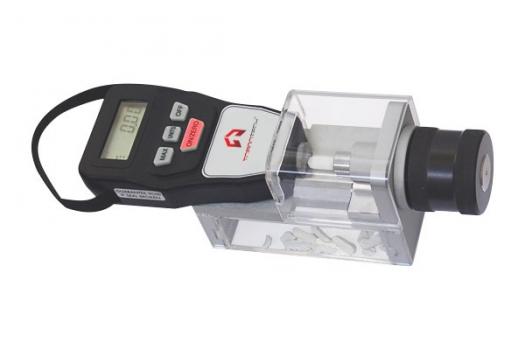Frankly, a solid dose tablet that doesn’t break down properly is a product that fails its most basic promise. In the pharmaceutical and supplement industries, getting this one step right is an absolute priority.
We’re talking about the disintegration test, a fundamental quality control process that follows a clear set of standards, namely the USP 701 disintegration and disintegration USP 2040 guidelines.
Here at Torontech, we get it. Our instruments ensure this critical step is performed with precision, every single time. And we provide these solutions at a cost-effective price point.
Why is This Breakdown Process So Important?

The entire function of a tablet is to deliver its active ingredient. If the tablet remains intact, that ingredient is locked away and cannot provide its therapeutic benefit.
The disintegration test USP serves as a crucial simulation of what should happen inside the body. In our experience, this isn’t just another box to check for regulators; it’s the fundamental proof that your product is viable.
If a tablet fails this, it’s a critical checkpoint failure, as the active ingredient may never be fully available to the body. For most immediate-release tablets, the expectation is a complete breakdown in under 30 minutes.
Related article: Dissolution vs Disintegration: A Full Comparison
For example, take a common immediate-release pain reliever. If the tablet was over-compressed during manufacturing, it could fail the test. The direct result is delayed relief for the consumer and a costly failed batch for the manufacturer.
Similarly, an enteric-coated tablet designed to bypass the stomach must remain whole in an acidic environment but break down quickly in an alkaline one. A failure here could mean the drug is released in the wrong part of the body. This is precisely the kind of issue a reliable disintegration test USP is designed to catch.
The Core Standard: USP 701 Disintegration
For the vast majority of pharmaceutical tablets and capsules, USP General Chapter 701 is the authoritative standard for USP 701 disintegration. Its methodology is the industry benchmark for predicting in-vivo behavior.
This chapter isn’t just a guideline; we see it as the essential playbook for ensuring product consistency. It provides exact specifications for several key parameters:
- The Apparatus: It calls for the use of the standard basket-rack assembly (Apparatus A).
- The Test Fluids: The liquid media are clearly defined and can range from purified water to simulated gastric or intestinal fluids.
- Global Harmonization: Its alignment with the European (EP) and Japanese (JP) Pharmacopoeias means a single, well-documented test can support global regulatory filings.
The precise, automated control in our ToronDT-Auto is a perfect example of equipment designed to rigorously follow these USP 701 disintegration parameters.
The Specifics of Disintegration USP 2040 for Supplements

Dietary supplements represent a unique category, and frankly, treating them the same as standard pharmaceuticals would be a mistake. This is why disintegration USP 2040 exists. It’s the official set of instructions adapted for the real-world challenges these products present, such as:
- Formulation Challenges: It addresses issues like botanical ingredients that can swell and become gelatinous.
- Physical Size: It accounts for the fact that many supplements are significantly larger than standard pills.
- Alternative Apparatus: In some cases, the chapter may require Apparatus B, which features a larger mesh screen to prevent clogging and produce a valid result.
This is why versatile equipment is so important. The multi-basket configuration of our ToronDT-6AL allows for flexible, parallel testing of different products according to disintegration USP 2040 standards.
What Does the Disintegration Test USP Procedure Involve?
The procedure itself is a highly controlled sequence of events. This rigidity is what makes the results trustworthy.
- The Apparatus: A specialized basket-rack assembly holds six transparent tubes. The entire assembly is lowered into a vessel of immersion fluid, kept at a constant 37°C.
- The Motion: A single dose is placed in each tube. The apparatus then moves the assembly vertically in the fluid at a frequency of 29-32 cycles per minute.
- The Observation: The test is run for a specified duration. A successful test ends with no particle of the unit remaining on the screen of the tube.
- The Acceptance Criteria: For the batch to pass, all six units must disintegrate. If one or two fail, the test is repeated with 12 additional units. The batch is approved if 16 of the total 18 units tested have successfully disintegrated.
Read more: Your Guide to USP Calibration of a Disintegration Tester
Torontech: Your USP Disintegration Test Solution
Meeting USP compliance is non-negotiable, and the quality of your testing equipment directly reflects your commitment to quality.
At Torontech, we provide dependable disintegration testers that deliver the accuracy you need for USP 701 disintegration and other standards, without exceeding your budget. Investing in a reliable tester isn’t an expense; it’s insurance against costly product failures.
Our lineup offers flexible multi-basket, fully automated, and specialized models, all built for durable and straightforward operation.
Ready to improve the efficiency of your quality control process? We invite you to browse our complete range of USP-compliant disintegration testers or contact our expert team today for a personalized quote.
Achieve Consistent Disintegration, Batch After Batch
Explore cost-effective Disintegration Testers for reliable results.
Frequently Asked Questions (FAQ)
2. What are the consequences if a product batch fails the disintegration test?
A failure is a serious indicator of a problem in the formulation or manufacturing process. It requires an immediate investigation. The batch is placed on hold and cannot be released until the issue is corrected and the product can pass the test.
3. Why is the test always performed at 37°C?
The temperature is set to 37°C (with a tolerance of ± 2°C) because this is the accepted physiological temperature of the human body. The objective is to replicate internal conditions to produce a meaningful prediction of the drug's real-world performance.
4. What kinds of fluids are specified for the test?
The fluid medium is chosen based on the product. For many standard tablets, purified water is the specified medium. For dosage forms with advanced coatings, the protocol may require sequential use of simulated gastric and intestinal fluids.
5. How different is USP 2040 for supplements compared to USP 701?
While they are built on the same core principles, disintegration USP 2040 is specifically adapted for the physical realities of supplements, such as their larger sizes and different compositions. The fundamental goal—ensuring the product breaks apart—remains exactly the same.








